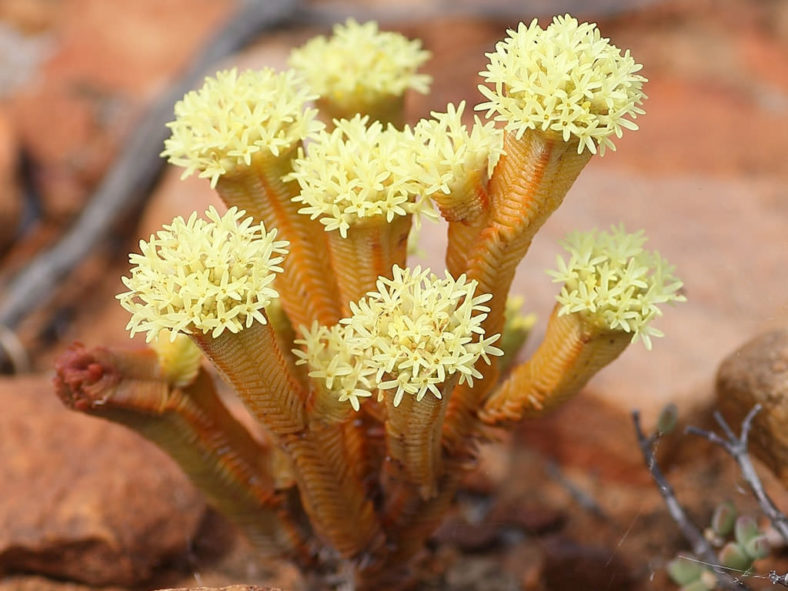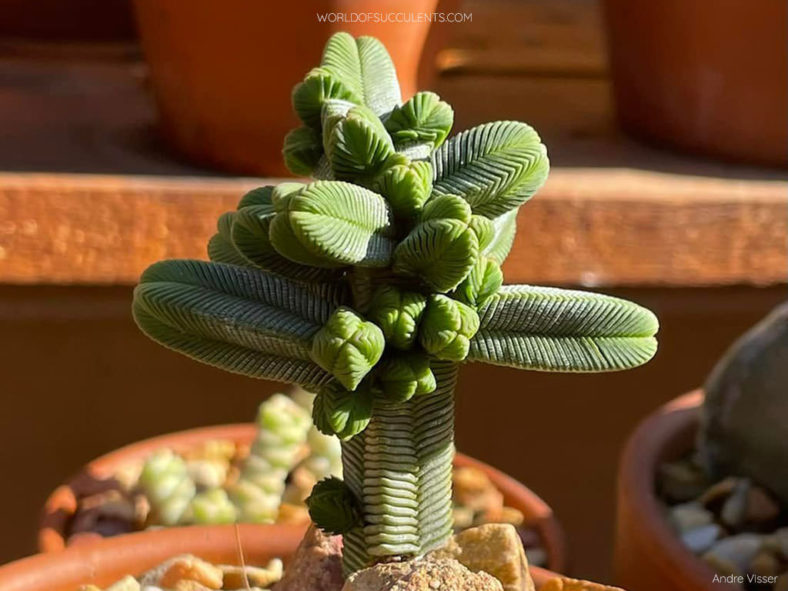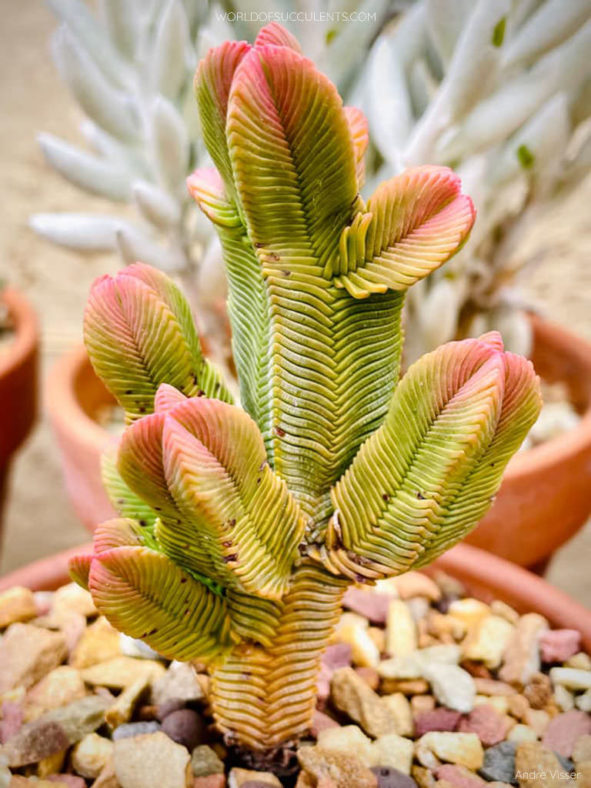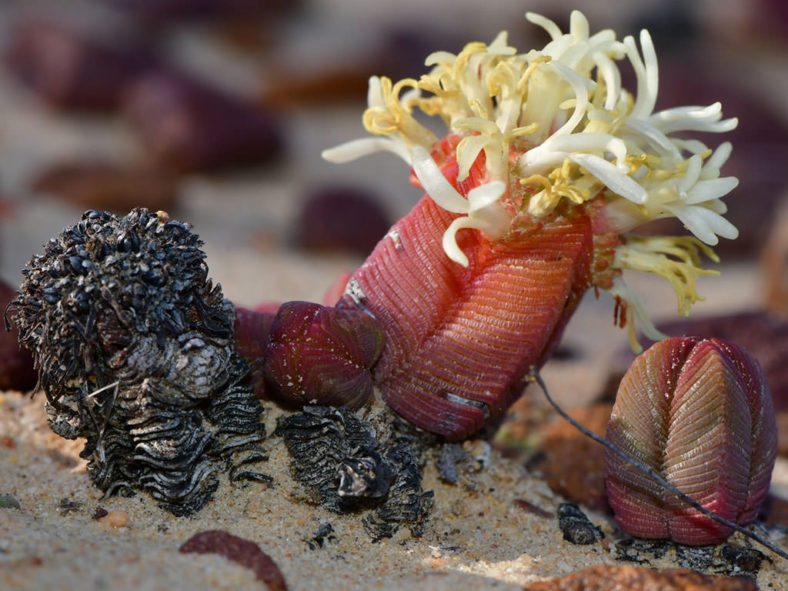Scientific Name
Crassula pyramidalis Thunb.
Common Name(s)
Pagoda Mini Jade, Pyramid Crassula
Synonym(s)
Purgosea pyramidalis
Scientific Classification
Family: Crassulaceae
Subfamily: Crassuloideae
Genus: Crassula
Etymology
The specific epithet "pyramidalis" (pronounced "peer-uh-mid-AH-liss") means "pyramidal," and refers to the not-quite-pyramidal shape of the 4-angled columns of this species.
Origin
Crassula pyramidalis is native to South Africa. It is primarily found in the mountainous areas of the southern Great Karoo and its adjoining areas, where it grows on gravelly flats and gentle slopes, often in shallow soil.
Description
Crassula pyramidalis is a sparingly branched succulent with green to grey-green or brownish-green, very densely packed leaves on erect to decumbent stems, forming 4-angled columns. It is a variable species that slowly grows, reaching heights of up to 10 inches (25 cm). The leaves are flat, triangular-ovate, with entire margins, measuring up to 0.5 inches (1.2 cm) in length and 0.3 inches (0.8 cm) in width.
The flowers are white or cream-colored, tubular, and appear in a dense terminal rounded cluster from mid-spring to summer. They can reach a length of 0.4 inches (1 cm). Unfortunately, Crassula pyramidalis is monocarpic, meaning its stems die after flowering, but new ones emerge from the base. Branching also happens higher up on the stems.

Hybrids of Crassula pyramidalis
How to Grow and Care for Crassula pyramidalis
Light: C. pyramidalis prefers full sun to partial shade. However, intense afternoon sun in the hottest period of summer can burn the leaves of the plant. Therefore, a place with morning sun and afternoon shade would be perfect. Indoors, place your plant in a window that receives at least 6 hours of direct sunlight.
Soil: This plant is not particular about soil pH but requires very porous soil with excellent drainage. Use commercial potting soil mixes designated for succulents, or mix your own.
Temperature: Like most Crassulas, this succulent can tolerate short-term freezing, but prolonged exposure to extremes of cold or heat will cause it to lose leaves and eventually die. C. pyramidalis can withstand temperatures as low as 25°F (-3.9°C). USDA Plant Hardiness Zones 9b to 11b, 25°F to 50°F (-3.9°C to 10°C).
Watering: Avoid overwatering using the "soak and dry" method, where the soil is soaked with water, slowly drained, and left to dry out before watering again. Reduce watering in winter. Potted plants require more frequent watering than those in the ground.
Fertilizing: C. pyramidalis does not require much feeding, but will benefit from a small amount of organic fertilizer in mid-spring, when it begins actively growing.
Repotting: Repot as needed, preferably in spring, at the beginning of the active growth period. Ensure the soil is dry before beginning the repotting process.
Propagation: This succulent is generally propagated from stem cuttings and seeds. Using stem cuttings is the fastest way to get a decent-sized plant. This process is most successful if done at the beginning of the plant's active growth period. Sow the seeds in the spring or summer.
Learn more at How to Grow and Care for Crassula.
Toxicity of Crassula pyramidalis
Crassula pyramidalis is nontoxic to people and pets.
Links
- Back to genus Crassula
- Succupedia: Browse succulents by Scientific Name, Common Name, Genus, Family, USDA Hardiness Zone, Origin, or cacti by Genus
Photo Gallery
Click on a photo to see a larger version.


